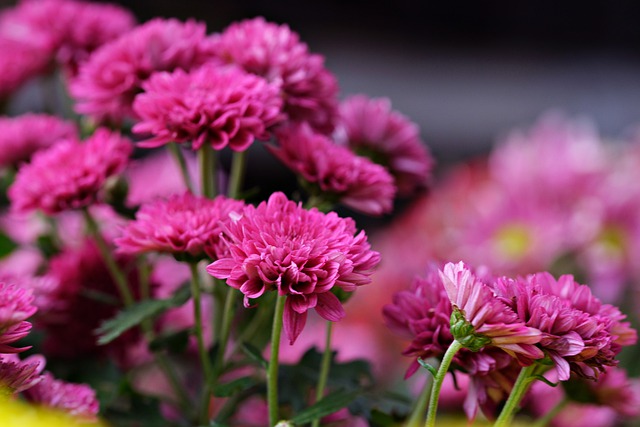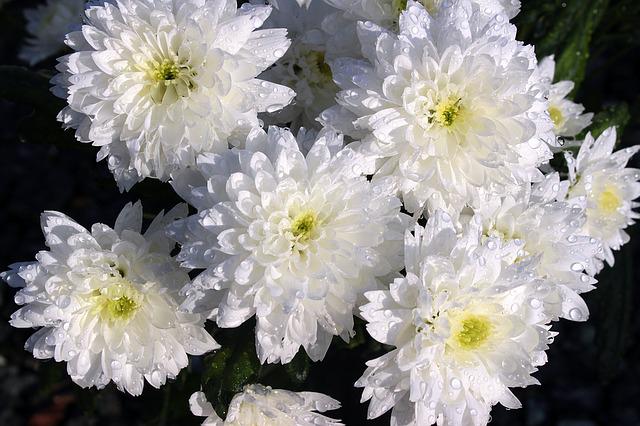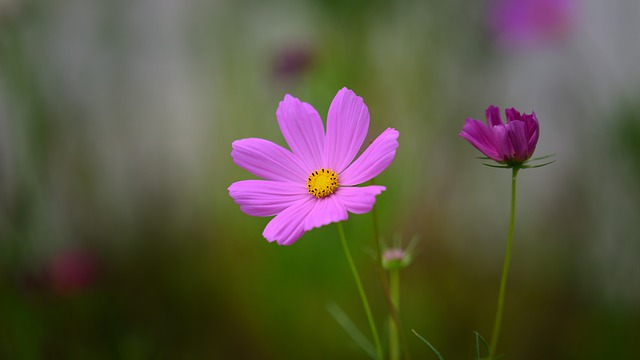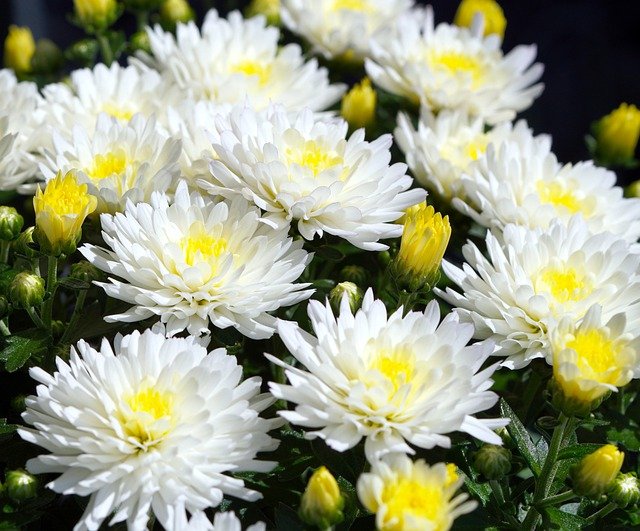When to Prune Chrysanthemums? The Best Time to Cut Your Mums

When your plant is 6 inches tall in the spring, just pinch off 1 inch from each shoot. Repeat this procedure every three weeks until the start of summer. Cut back on spent flowers during the fall to make them bloom longer. After the plant has died in the winter, do not cut it. Research shows that letting it naturally die back over winter strengthens the plant. Just remove the dead leaves and stems in the spring.
Table of Contents
Should You Cut Back Your Chrysanthemums?
Don’t stress out about how to cut back on chrysanthemums. Mums aren’t really “pruned.” Instead, they are pinched as they grow. This helps the plant grow branches, fill out, and make more flowers.
Many types of garden mums, if left to their own devices, will become tall and lanky by the end of the summer. In extreme cases, you may not want to encourage flower production if it has begun. Why? Garden mums, or Chrysanthemum morifolium, are frost-sensitive, and for a good reason. If you let your garden mums bloom in the summer, the high temperatures will likely cause the flowers to wilt quickly and turn brown. This is because they bloom best in the cooler autumn temperatures and keep their blooms for much longer (up to 60 days). As a result, some gardeners refer to them as “fall garden mums.”
Next steps, then? With some timely and light pinching, the mums in your garden will stay as full and compact all season long, producing as many flowers as they did when you first bought them from the nursery.
Pinching Instructions
Sometimes, in the early spring, mums begin to grow in a bushy fashion from the roots up. However, depending on the weather and environment, some varieties will start blooming too early if left to grow naturally without any pinching. As a result, the branches frequently topple over from the weight of the blossoms. Mums can be pinched back repeatedly from early spring to midsummer to prevent this and keep them in a compact shape with more branching. The Fourth of July is a handy reminder that it is time to stop pruning my central Georgia garden.
Therefore, mums do not require any pinching or pruning. It’s possible that if you don’t prune your plants, they will only bloom for a short time in the summer, and you’ll need to use plant supports to prevent the floppy stems from damaging your garden all summer long.
Here are some pointers to remember if you decide to pinch your mom. Although this method of producing well-shaped, bushy fall flowering plants may seem harsh initially, it is well worth the effort.
- Start pinching stems in the spring when plants are about 6 inches tall. Pinch them back by grabbing a stem between your thumb and index finger about two to three inches from the plant’s base and just above a leaf, squeezing until the stem breaks. For those who, like me, prefer to keep their fingernails short, a pair of sharp pruners or snips will do the trick.
- After the first pinching, new stems will grow from just below where the plants were pruned. Pinch these new stems about 2 to 3 inches above a leaf when they reach 6 inches. Repeat this step with the rest of the plant’s stems.
- If you want to have flowers in the fall, you can keep doing this until about the middle of July and then stop. After the middle of July, the number of flower buds may be reduced if the plant is pruned.

More Care Tips for Healthy Growing Chrysanthemums
We’ve already established that chrysanthemums aren’t hard to cultivate and require little in the way of upkeep. However, a well-thought-out maintenance schedule will guarantee that you get the most out of them and that your garden remains vibrant and colorful throughout the year.
Proper Watering
Water it consistently and evenly to keep this plant thriving and robust through spring, summer, and fall. When the ground is frozen in the winter, watering can be postponed until the weather warms up.
Morning is best for watering, and you should aim to soak the soil to a depth of about 20 centimeters at the plant’s base.
Pruning
Pinch your chrysanthemums regularly throughout the growing season, even though they don’t need pruning. Your plant life can then expand and flourish.
Each shoot should have about an inch snipped off it in the spring, when the plant is about 15 centimeters tall. Every two weeks up until summer, you can do this.
Fall is the time to deadhead spent blooms. Don’t trim your chrysanthemum back when it dies back for the winter. It will usually come back the following year much stronger and healthier if allowed to die back naturally.

Fertilizing
Fertilizing your chrysanthemums is a must if you want them to thrive. Apply a balanced fertilizer to the soil throughout the plant’s vegetative growth. By delaying flowering, your plants will have more time to expand and become lusher.
Once your chrysanthemum flowers have opened, switch to a balanced, water-soluble fertilizer and apply from early spring through summer once a month.
Assuring the Safety of Chrysanthemums
Although susceptible to a few diseases, chrysanthemums require relatively little attention and usually thrive with proper care.
Pests
It’s best to keep an eye out for mites, thrips, aphids, and earwigs. Also, slugs and snails!
These pests can be dealt with by spraying the plants with insecticidal soap or giving them a thorough soaking with the hose.
Fungal diseases are among the most frequently encountered but are also the simplest to diagnose and treat promptly. Check for leaf spots, powdery mildew, rust, and molds.
You can find various highly effective anti-fungal sprays at any garden center. However, in the case of some fungus diseases, it may be necessary to cut off infected branches or the entire plant to stop the infection from spreading.
As previously mentioned, many of the viral diseases spread by the pests, as mentioned earlier, have no known cure. Look for symptoms such as stunted growth and leaf yellowing.
If the plant turns out to be infected with a virus, you may have to destroy it. Even though this is unfortunate, it is highly unlikely because chrysanthemums rarely contract diseases if you take good care of them.

